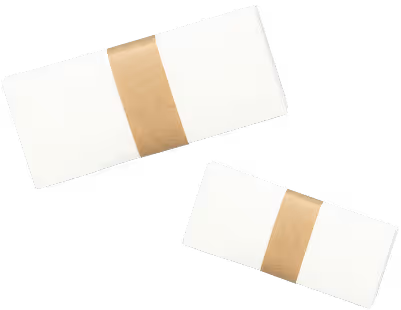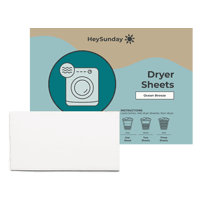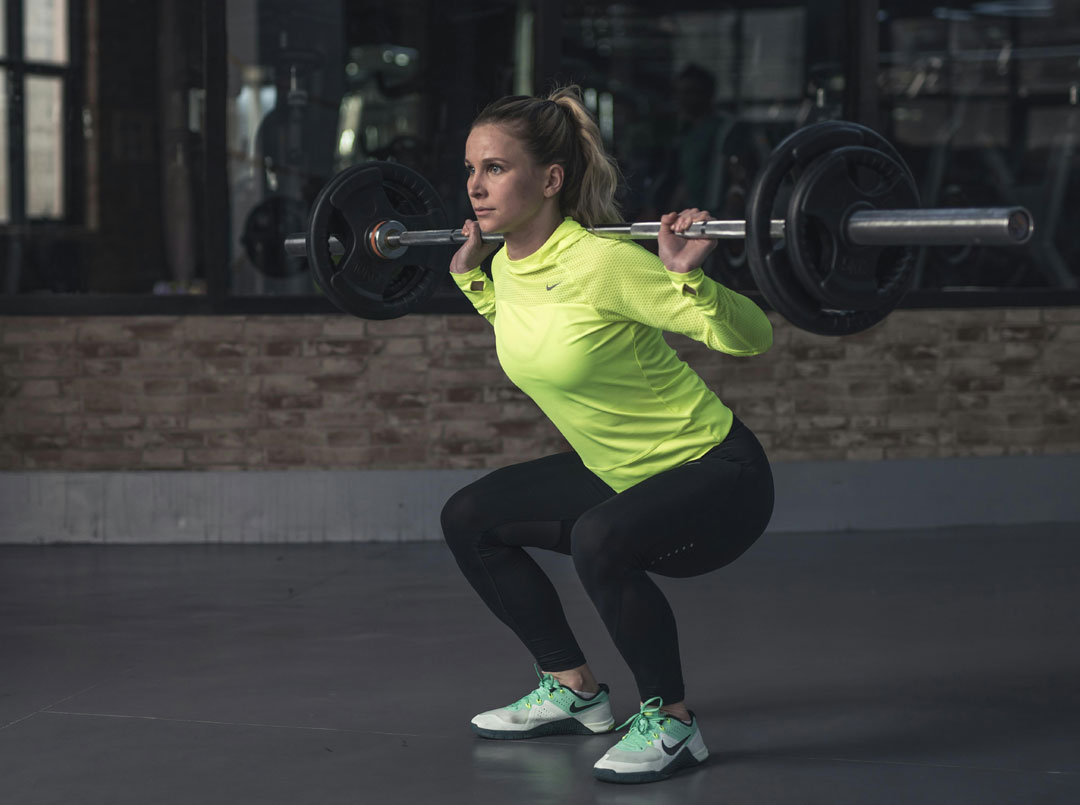
How to Wash Gym Clothes Without Killing Stretch: Odor-Free & Stretch-Safe Guide
Tired of your gear smelling funky even after a wash? Or worse—finding your favorite leggings permanently stretched out or pilling after just a few cycles?
If you’re a regular in workout clothes, you’ve probably run into the usual suspects: lingering sweat odor, shrinking or sagging fabric, dull colors, and that faint plasticky scent synthetic fabrics sometimes hold onto. It’s frustrating, especially when you’re doing everything right. Or so you think.
The truth is, most people wash their gym clothes the wrong way. Even well-meaning routines (like using extra detergent or blasting hot water) can ruin stretch fabrics, reduce odor resistance, and accelerate wear.
In this guide, we’ll break down the science of activewear fabrics, share eco-conscious washing tips, and show you how to wash gym clothes properly so your gear stays fresh, stretchy, and high-performing.
Fabric Science of Elastane & Polyester
Before we dive into how to wash gym clothes the right way, let’s talk about what they’re made of and why that matters.
Meet Your Fibers: Elastane & Polyester
Most gym clothes today are made with a blend of elastane (also known as Spandex or Lycra) and polyester. Together, they deliver the magic formula we’ve all come to expect from activewear: stretch, support, sweat-wicking, and style.
- Elastane is the stretch-master. It’s what gives your leggings that form-fitting snap-back shape and your sports bra the ability to compress and support without sagging. Just 5–10% elastane in a garment can make a huge difference in fit and flexibility.
- Polyester, on the other hand, is the workhorse. It’s lightweight, moisture-wicking, colorfast, and incredibly durable. You’ll find it in everything from tanks and tees to running shorts and mesh panels. But while polyester holds up to wear and tear, it can be a bit of a stinker. Literally. It traps odor more easily than natural fabrics due to its oil-loving structure.
Together, these synthetics create breathable, high-performance gear that moves with you and keeps you cool. But they come with one caveat: they need gentle, targeted care to last.
What Damages These Fabrics?
Despite their strength, both elastane and polyester are vulnerable to common laundry mistakes:
- Heat: High temperatures (from hot water or high dryer settings) can break down elastane’s elasticity, causing your clothes to stretch out permanently or become brittle and crackly over time.
- Friction: Overloading the machine or skipping mesh laundry bags can cause abrasion, leading to pilling, thinning fabric, and microplastic shedding.
- Harsh Detergents: Many of the alleged “best detergents for gym clothes” are formulated for cotton or heavy-duty cleaning. Their enzymes and suds may be too aggressive for delicate elastane, leaving behind residues that degrade the stretch and lock in odor.
Why It Matters
When these materials break down, your clothes stop performing as they should. You lose that snug-but-comfy fit. Odors stick around longer. And what should be long-lasting gear ends up in the donation bin after a few short months.
But here’s the good news: with the right wash settings and smarter products, you can dramatically extend the lifespan of your activewear. A little fabric knowledge goes a long way toward keeping your leggings springy, your tees fresh, and your laundry routine stress-free.
Pre-Wash Rinse & Vinegar Soak
Let’s be honest. Gym clothes don’t exactly smell like roses after a workout. Between sweat, body oils, and whatever was on the yoga mat or weight bench, your activewear is exposed to a whole lot of funk.
That’s why what you do before you toss it in the wash can make or break your laundry game.
Step 1: Quick Cold Water Rinse
As soon as you peel off your gym gear, give it a quick rinse in cold water. No soap needed. Hold each item under running water or soak it in a basin for a few minutes.
This helps:
- Prevent sweat and bacteria from setting into the fibers
- Loosen grime and body oils
- Minimize odor buildup between workouts and laundry day
If you're in a rush, even tossing clothes into the machine for a short rinse cycle works. The key is to act before the sweat dries because once it does, odors are much harder to remove.
Step 2: Optional Vinegar Soak (for Heavy-Duty Funk)
If your gym clothes smell a little too lived-in, it’s time for a vinegar soak.
- In a sink or bucket, mix: 1 part white vinegar to 4 parts cold water
- Submerge clothes for 20–30 minutes before washing
White vinegar is a natural deodorizer that breaks down bacteria and lifts away odor-causing residues. It’s also surprisingly gentle on synthetic fabrics when used occasionally.
Pro Tip: This soak works wonders for high-sweat items like compression shorts, sports bras, or hot yoga gear. For best results, do it before your main wash cycle using HeySunday detergent sheets.
A Word of Caution
While vinegar is a laundry hero in moderation, it’s not meant for daily use, especially with elastane-heavy clothing. Overuse of vinegar can slowly degrade elastic fibers, reducing stretch and shape retention over time.
To play it safe:
- Only soak when odor is persistent
- Stick to a 1:4 vinegar-to-water ratio
- Rinse thoroughly before washing
By adding this quick rinse and occasional soak to your routine, you’ll not only remove odor from activewear but also help it last longer and perform better. That’s a win for your workout, your wallet, and the planet.
Detergent Sheet Dosing for Synthetics
If you’ve ever pulled your gym clothes out of the wash only to find them still smelling... “athletic,” your detergent might be the problem. Not your sweat.
The truth is, not all detergents are designed with synthetic fabrics in mind, and traditional pods or liquids often leave behind residues that trap odor and degrade performance.
Why Detergent Sheets Are Different
Unlike pods and liquids, detergent sheets dissolve completely. No goopy film, no waxy coating, and no excess suds that get stuck in tight-knit synthetic fibers like elastane and polyester.
Traditional formulas tend to be too heavy or overly fragranced, which can mask odor temporarily but often make things worse in the long run by clogging up the fabric.
Pods, in particular, can overdose small loads with high concentrations of detergent, which leads to residue buildup. And if you’ve ever had a pod half-dissolve in cold water? You know the mess that creates.
Liquids aren’t much better. They tend to be measured by eye, which makes it easy to use too much.
Why Sheets Work Better for Activewear
This is where HeySunday detergent sheets shine. They’re:
- Gentle on synthetics like Lycra and spandex, preserving stretch and color
- Free of harsh chemicals and artificial fragrances that irritate skin (and pets)
- Plastic-free and biodegradable, so you’re protecting your gear and the planet
- Effective at removing odor without masking it, thanks to clean, plant-based enzymes
And because they’re dry and pre-measured, there’s no guesswork or sticky residue.
How to Dose It Right
Activewear loads tend to be smaller but smellier, so getting the dosage right makes a big difference:
- 1 sheet: Perfect for small gym loads (about ¼ drum full)—ideal if you’re washing a single outfit post-yoga or a quick workout.
- 2 sheets: Recommended for medium loads (around ¾ drum full)—great for several sets of workout clothes or a mix of gym and casual wear.
- 3 sheets: Best for heavily soiled or extra-large loads—like sweaty team uniforms, post-hike laundry, or anything that needs a serious refresh.
Pro Tip: Toss the sheet directly into the drum before loading clothes. It starts dissolving immediately and gets to work faster.
Detergent sheets aren’t just convenient. They’re smarter. For anyone wondering how to wash workout clothes properly and keep them odor-free without damaging the stretch, this is your golden ticket.
Drying Temps & Lifespan Tips
How you dry your gym clothes can make or break their longevity. Activewear fabrics like elastane and polyester are sensitive to high temperatures and harsh tumble cycles, which can lead to a loss of stretch, pilling, and faded colors.
That’s why proper drying is just as important as washing.
Air Drying Wins (Almost Always)
The safest option? Air drying. Hang or lay your clothes flat to dry naturally, ideally in a well-ventilated area.
This helps maintain the elasticity of fibers and prevents heat damage that often sneaks in with machine drying. It also reduces static cling and the likelihood of lingering odors.
If You Must Machine Dry
Sometimes you need your gear ready fast, which is understandable. If you choose to machine dry, go with low heat only, and remove items as soon as they’re dry to avoid overdrying.
Excessive heat not only damages stretch fibers but also breaks down moisture-wicking coatings, making your gear less breathable over time.
Skip the Fabric Softener (Seriously)
It might feel counterintuitive, but fabric softener is one of the worst offenders when it comes to activewear. It leaves a waxy coating that traps bacteria and odor while making performance fabrics less effective.
Instead, use a splash of white vinegar in the rinse cycle (but not every time) if you need a softening boost.
Smart Storage = Long-Lasting Gear
Once dry, fold garments carefully or hang them using wide, padded hangers to maintain shape.
Avoid stuffing drawers or hanging items by the shoulders if the fabric is still damp, as this can cause stretching, warping, and permanent hanger marks.
Quick Tip: Rotate your activewear frequently to avoid overstressing the same items. This helps maintain fit and functionality, especially for compression wear.
Odor‑Killer Routine (Baking Soda, Sunlight)
Even when you follow all the right washing steps, gym clothes can still develop that stubborn funk over time, especially if they’re worn often or tossed into the laundry basket damp.
That’s where your monthly odor reset comes in.
Overnight Baking Soda Soak
About once a month, give your most-used activewear pieces a deep deodorizing soak.
- Mix 1/2 cup of baking soda in a tub of cold water
- Soak gym clothes overnight (or at least 6 hours)
- Wash with a detergent sheet the next morning
Why it works: Baking soda neutralizes acids and breaks down oil buildup that traps odor.
Sunlight Sterilization
After the soak, rinse your clothes with cold water and lay them flat or hang them outdoors in direct sunlight for a few hours. UV rays act as a natural bacteria killer and odor eliminator. Plus, sunshine helps brighten colors and restore freshness.
Note: Don’t overexpose bright colors. Rotate halfway through if needed.
This baking soda soak + sunlight sterilization combo is especially helpful for high-use gear like compression tops, sports bras, and socks.
Final Word: How to Wash Gym Clothes + Build a Laundry Routine That Works
Caring for your activewear isn’t about being fussy. It’s about being smart. Gym clothes are an investment, and how you wash them makes all the difference in how they perform (and smell).
Here’s a recap:
- Rinse sweat ASAP
- Use vinegar or baking soda soaks when needed
- Wash with cold water and detergent sheets
- Air dry or use low heat
- Avoid softeners, overloading, and over-washing
Modern fabrics deserve modern care. With the right habits and a sustainable detergent like HeySunday, you can preserve stretch, remove odor from activewear, and wash gym clothes properly without killing their performance.
Ready to stop wrecking your workout gear?
Subscribe & save on HeySunday laundry detergent sheets today and make laundry day easier on your clothes, your skin, and the planet.














“My sheets have never felt cleaner. I’m hooked.”
“Finally — detergent that actually works and doesn’t take up half the shelf.”
“Hey Sunday WORKS. Great for stains, and no buildup in the washer.”
“We switched from liquid. The scent is amazing and it saves us money.”
“I’ve got total control with HeySunday. I’ll never go back to powder.”